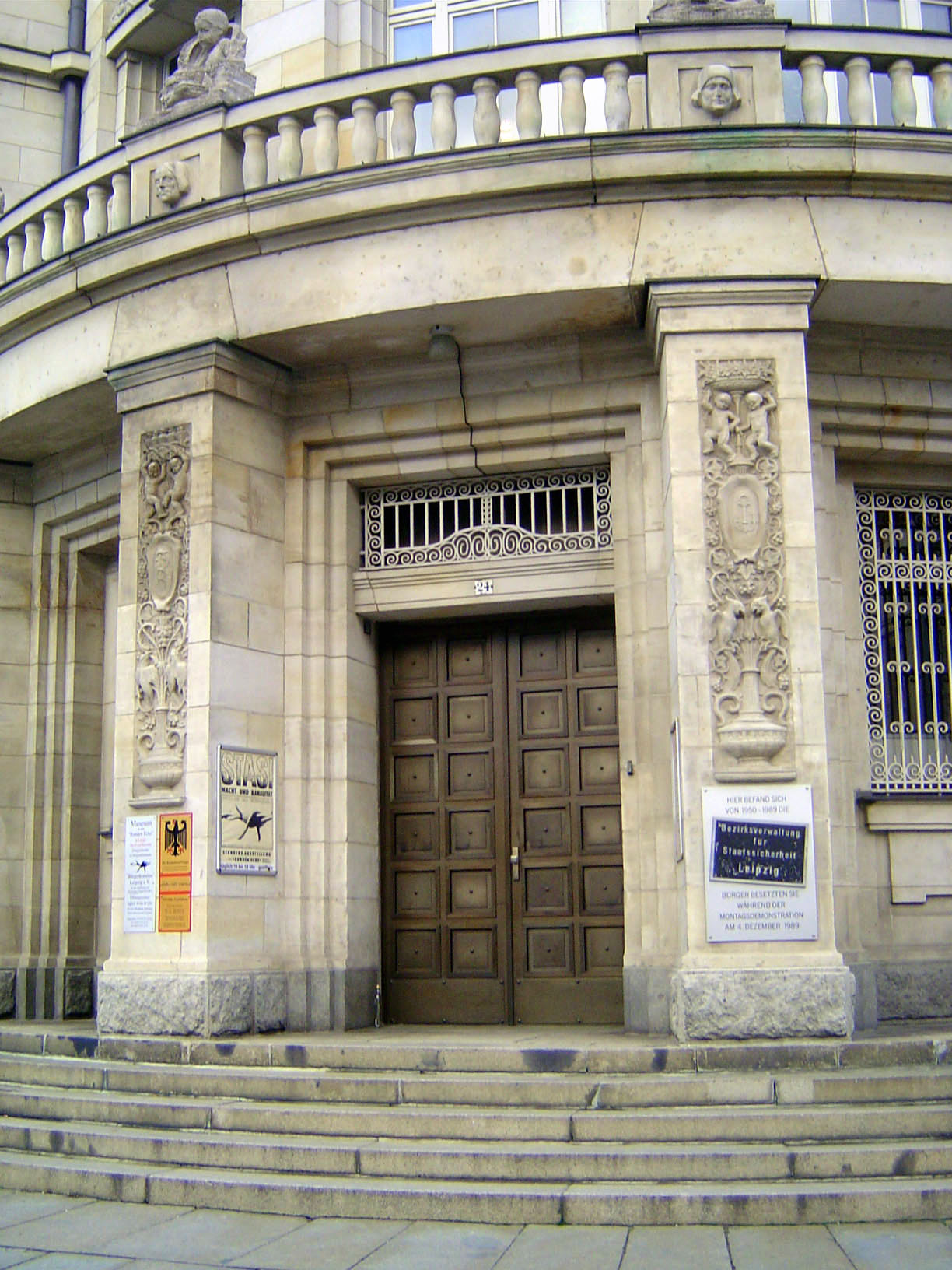
Leipzig has made huge progress since the collapse of East Germany. Here, we walk around and see the city reinventing itself in 2007.
For more, see Niels Gormsen and Armin Kühne, Leipzig, Stadt des Wandels (2004). The city's remarkable collection of Art Nouveau or Jugendstil buildings are discussed in Peter Guth and Bernd Sikora, *Jugendstil & Werkkunst: Architektur um 1900 in Leipzig *(2005) and Stefan W. Krieg and Bodo Pientka, Paul Mobius: Jugendstil in Leipzig (2007).
Before we leave the Soviet era, it's worth looking at this old building, which served as the local headquarters of the secret police.
Inside. It's now a very popular museum, although there's not a lot of amusement on offer.
After 40-odd years of Communist rule, parts of the city had still not recovered from the war.
A close-up. This district was famous for music publishers such as C.F. Peters and Breitkopf & Hartel.
A still-empty palazzo.
A paper warehouse, still in ruins.
In better shape. The name on the side is Hiersemann.
Hiersemann was a local publisher, later an antiquarian book dealer.
An image of Hiersemann?
A vocational school now, in 1911 this was built as the city's first high school for women. The force behind it was Henriette Goldschmidt (1825-1920). In 1872 she had established, also in Leipzig, a school to train kindergarten teachers.
After the war, East Germany picked up the Stalinist version of classicism, as in this, the Ringcafe, built in the 1950s as a "worker's palace."
The stripped-down version.
The East Germans also became very keen on prefabricated buildings. Some have been demolished, others fixed up, and still others, like this one, are waiting.
The optimistic interpretation: renovation in progress.
Another prefab, with the ornament characteristic of the Soviet era. For an interesting comparison, see the photos at Uzbekistan: Soviet Tashkent.
Yet another.
You'd have a very wrong impression of the city if you stopped at the last picture. Here's the Thomas Church, Bach's home for decades. It's been transformed from his time, first with a neo-gothic treatment in 1886 and, since reunification, with a cleaning and painting.
Inside, there's a very active musical program. The organist must from time to time wonder nervously if the old man is listening.
Until 1945, this building of 1888-95 housed the German Supreme Court. Now it's the Federal Administrative Court, or Bundesverwaltungsgericht.
The new city hall, new because it was built in 1905.
The lions are older.
Now housing the Leipzig Transport Authority, this building was designed by Georg Wunschmann and built during World War I for the Verbandes Deutscher Handlungsgehilfen, or the Association of German Commercial Travelers.
This heavyset building was designed by Felik Kaeppler. During the Soviet period it was the House of German-Soviet Friendship, or the Haus der Deutsch-Sowjetischen Freundshaft. Vacant for a decade after reunification, it now houses at least two music schools.
The core of the city's shopping district has been heavily restored.
Handsome, in a heavy-set way. The blue pipe looks odd, but the city's water mains are frequently above ground this way.
Typical routing of the pipe system.
The city has many old commercial buildings that have been handsomely restored, like this arcade.
One of the most interesting is this one for Riquet, a seller of Oriental products since 1745.
The building was designed by Paul Lange and finished in 1910. The entrance was destroyed in the war and not reconstructed for 50 years.
Quite an assortment.
A handsomely restored apartment building that was the home of Edvard Grieg when he wrote the Peer Gynt Suite in 1888.
Wrought-iron entrance gate.
Renovations at Seeburgstrasse 47.
Another Georg Wunschmann Building, an urban villa from 1904, at Chopinstrasse 11a.
Neighboring buildings.
The subtext seems to be that the weight of high German culture is almost too heavy to bear.
An entrance that begs an explanation.
Cobbles.